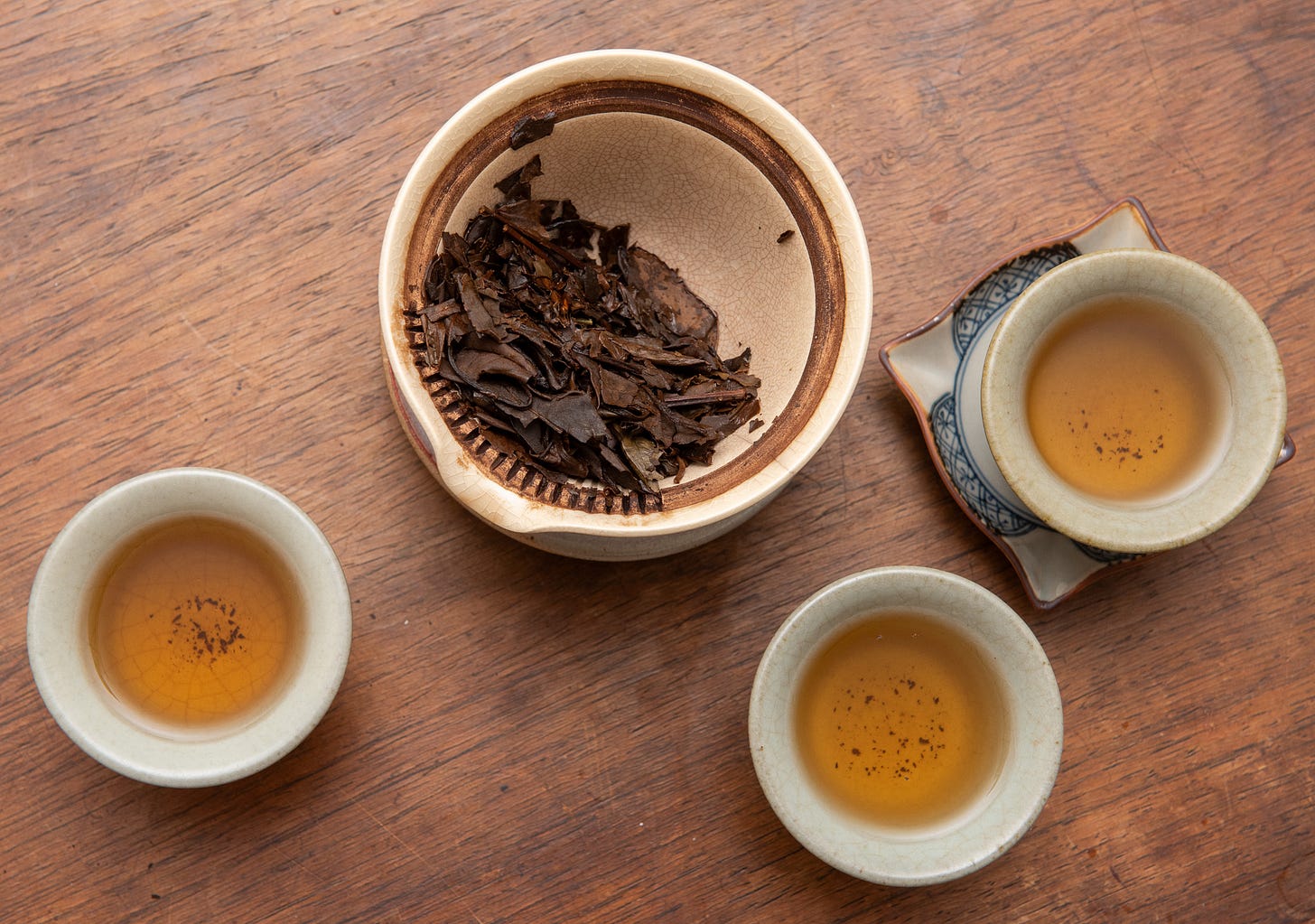A gong with rich timbre
The tea: 2015 Gongmei white tea, sold by White2tea. $76 for 360g.
I don’t think New Year’s resolutions have much staying power, but I do believe in creating omens for oneself. Here is a peaceful, grounding tea to greet the new year and set your terms for the months ahead. It evokes the feeling of walking through dark and ancient woods, the understory thick with blackberry brambles. There are sweet treasures in these rough and austere leaves.
White teas have a reputation for tasting soft and light as clouds, but that’s only half the story. The character of a traditional Chinese white tea is mainly set by its plucking standard.
Yin zhen (silver needle) is the highest grade, made exclusively from unopened buds. It has a plush body but delicate flavor, like a sumptuous marshmallow.
Bai mudan (white peony) is made from the top bud and the first two leaves, which contribute more overt floral flavors.
Gong mei (tribute eyebrow) includes more mature leaves than bai mudan. They add darker, more robust flavors at the expense of a lighter body. With a range of buds to large leaves in the pluck, gong mei ages into a well rounded and affordable tea.
The lowest grade is shou mei (longevity eyebrow), so named because its bushy, unkempt leaves resemble an elderly person’s facial feature. Shou mei uses large leaves like gong mei, but few to no buds, so it’s less expensive and mellower in flavor.
The source: The last time Leafhopper covered Yunnan-based White2tea, it was in conversation with founder Paul Murray about his boundary-pushing smoked and roasted puer. Paul doesn’t spend all his time in a mad science lab, though. Many of his teas are as traditional as they get, such as selection of age-worthy white teas from their home of Fujian. This 2015 gong mei cake was $59 when I bought it in 2019. You can pay that price today for a comparatively older 2018 gong mei cake, or taste an even older shou mei. In recent years Paul has focused more on his own pressed white teas from Yunnan, Guizhou, Sichuan, and then some, so you can compare how local leaf and climate affect the character of white tea.
To brew: It’s almost impossible to get a bad brew with this lovely tea. Use boiling water and dose with your heart. You can steep a pinch of leaves all day in a thermos, pack a teapot, or even simmer the tea on the stove in a few cups of water for a syrupy elixir. I use about 7 grams in a 150 milliliter pot (1g/20ml) and steep up to a minute to draw out deep woodsy flavors with a clean, refreshing finish. If you sit with this tea you may pick up notes of blackberry, prune, and date. I love the buzz of sugary sweetness around my teeth and how soothing it feels in my stomach.
An appreciation for aged white tea
How much aged white tea is too much? The photo above shows part of my collection; there are more cakes, tins, and pouches that wouldn’t fit. I drink a lot of this style, especially during the cold months. If you like the idea of drinking with the seasons, aged white teas seem made for the first few days of the year, a time of stillness and looking inward.
White tea is made with the simplest of all processing: the leaves are left out to wither until they dehydrate on their own. The resulting brew has a clean, natural flavor that pairs with periods of hibernation. A good aged white tea is as quiet and contemplative as snowfall.
Records of air-dried teas date back 3,500 years to Shang Dynasty China, when drinkers would grind the leaves into a powder and boil them with herbs and spices. Processing methods for what we’d recognize as contemporary white tea emerged about 200 years ago. More recent still is the commercial sale of intentionally aged white tea, which only began around the 2010s. That means we’re still learning how they develop over longer periods of time.
Keep reading with a 7-day free trial
Subscribe to Leafhopper to keep reading this post and get 7 days of free access to the full post archives.









